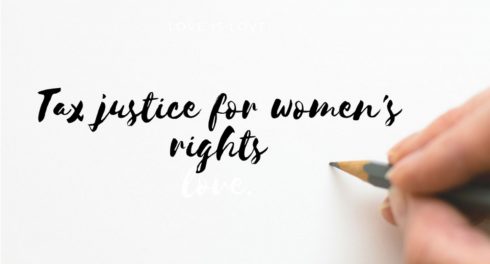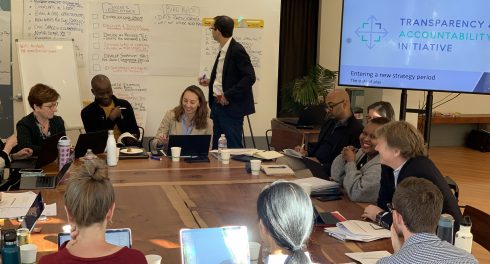Tips for better storytelling by donors
 Photo: Tariq Haiga at Unsplash
Photo: Tariq Haiga at Unsplash
Imagine we’re at a dinner party. I turn to you and say: tell me a story about you. Is your jaw half-open? Is there awkward silence? Are you cursing the too-long table that stuck you next to me for the rest of the meal? Too often this is what it feels like when donors and non-profits sit down to write a story about their work—after the fact, without context and aiming to do too much. So I’m thrilled the Transparency and Accountability Initiative is pushing us to think about how and when we tell stories about our work, what makes it hard, and how we can do better. My view: building the habit of storytelling while we’re doing the work and when we don’t have all the answers will help the most.
The Story Behind the Story, by Jed Miller and Alison Miranda, captures the views of more than two dozen people from the transparency, accountability, and communications fields, including funders and recipients of foundation grants. This includes the initiative’s members—the Ford Foundation, Omidyar Network, Open Society Foundations, and the William and Flora Hewlett Foundation, as well as the UK’s Department for International Development and the MacArthur Foundation—and organizations they support that are working to help citizens around the world interact with their governments to improve the availability and quality of health, education, and other public services.
It’s worth reading in full—especially for the way it separates different types of stories (think origin story versus evaluation results) and the candor used to describe the dynamics between donors and non-profits. Getting comfortable with a range of storytelling for a different purpose and audiences don’t come easily for donors or grantees. At the Hewlett Foundation, as the report describes, our revamped communications team structure aims to better support the organizations we fund and incorporate the same storytelling advice into our own work. The report is helping us think about how we can do more and better in both areas. My favorite tips in the report—and from the best storytelling I’ve seen—are:
1. Tell stories while you’re doing the work
Staring at a blank screen, trying to come up with the perfect results story is a difficult and painful task. You’re starting at the end and trying to reconstruct something without all the details, characters, or insights. It’s like telling the Cinderella story starting with “she lived happily ever after” and then trying to reconstruct how she started out poor and destitute, why her step-sisters were so mean, and how the fairy godmother and glass slipper left on the staircase was part of your theory of change. This is even harder when the narrator is in a communication or fundraising position separate from the program work and trying to craft and tell a story they didn’t experience themselves.
Better to think about telling your stories before you begin—why this works now, what’s the problem, who is part of it—and get in the habit of reporting what happens along the way. The Advocates Coalition for Development and Environment (ACODE), based in Uganda, shared a story earlier this year about how a simple, paper diary they produce—with key dates and reminders of councilors’ duties—helps councilors do their job and citizens monitor whether their elected officials show up to council meetings and act on their demands. (Integrity Action helpfully shared the story on their website.) It’s about one small piece of their work, but shows how they help citizens interact with their government officials in specific ways and places as they work to “make public policies work for people.” The Center for Global Development has an essay on Learning While Doing: A 12-Step Program for Policy Change written by Lawrence MacDonald and Ruth Levine (now at World Resources Institute and the Hewlett Foundation) with smart advice on how careful naming and regular blog updates on progress help track an initiative as it develops—and end up being part of its success.
There’s a story behind every incremental win, every moment that adjusts the approach, and how you navigate around obstacles. Capturing these stories as they happen means you will have key moments and real-time storytelling to pull on anytime you need it. You also get to test different stories and see what resonates with your listeners. And often the storytelling itself becomes part of what makes change happen.
2. Share the struggle
All good storytelling advice will tell you a story has to have a point and be interesting for your audience. What I don’t see highlighted nearly enough is that it’s the struggle—not the success—that connects people across continents and contexts. And it’s what lets listeners learn from others’ experience. We may want to be Cinderella living happily ever after, but we empathize with her grief and disappointment and an uncertain fate. I don’t know why we expect stories at work to be compelling –especially work that is so human-focused—without sharing the struggle and the uncertainty, too.
In their report, Miller and Miranda say “power dynamics make it hard to report project difficulties” and there is resistance to documenting failures among donors and grantees alike. I agree it’s hard to do in one catch-all product (like an annual report written for everyone and no one). Telling stories while doing the work, mentioned above, can put “project difficulties” in context, part of a longer narrative, and create space to pull in new ideas and let others learn with you.
StoryCorps experts cited in the report offer another way to break out of the tendency to think of a one-size-fits-all success story that an organization reports to its funder. They say open-ended, peer-to-peer conversations are “more authentic and thus more relatable, even to people from a different context.” (It’s what makes me and millions of listeners misty-eyed every Friday morning when StoryCorps airs.) I see so many ways transparency and accountability funders and organizations could record and share these kinds of conversations while doing their work, all made so much easier with smartphones in our pockets that can record high-quality audio and video. I would trade one hundred packaged success stories to hear a set of conversations between citizens advocating with their local government officials, or government officials talking about what kinds of citizen advocacy are most (or least) effective at informing their decisions.
3. Big ideas and concepts are still about people—and everyone is a storyteller
The stories we remember and re-tell, whether they’re about why an organization was founded or the influence it has, are always about real people. A story without people in it isn’t much of a story. This doesn’t mean every story has to be about direct, attributable impact on an individual citizen’s life; it does mean the people in your organization and those they interact with need to be in the stories.
And everyone in and around your organization is a storyteller. Global Press Institute hires women journalists who live in the communities where they work. It was founded on the idea that the storyteller affects what we read in the news and the quality of reporting. They take it one step further by posting not just Global Press news stories but notes from the journalists about how and why they wrote the story. See, for example, the article and blog about female students in Uganda schools claiming discrimination over which students were required to have short hair. Bonus: a community meeting was organized in the story’s comment section and a teacher later contacted the reporter, Nakisanze Segawa, to tell her the policy had changed–girls are no longer required to cut their hair short, no matter their ethnicity.
We may not have mythical superheroes in our midst as report author Jed Miller said, but the people that make up your organization and work alongside you are the heroes and tellers of your stories. (And for anyone in need of a fantastic four-minute refresher on the most successful shapes of stories, including Cinderella, Kurt Vonnegut is at your service.)
The Story Behind the Story should spur more organizations—funders included—to build their teams’ storytelling muscles, to get in the habit of “storytelling while doing”, and to find creative ways to capture stories between peers to share and learn from the challenges.
I hope you’ll also tell me about the best storytelling you’ve seen and how donors, like the Hewlett Foundation and the Transparency and Accountability Initiative members, can support your storytelling and communications efforts to increase the impact of your work. My promise: I’ll write a story about who sends the most interesting input, what we try, and whether it changes our practice.
This blog was written by Sarah Jane Staats (William and Flora Hewlett Foundation).


